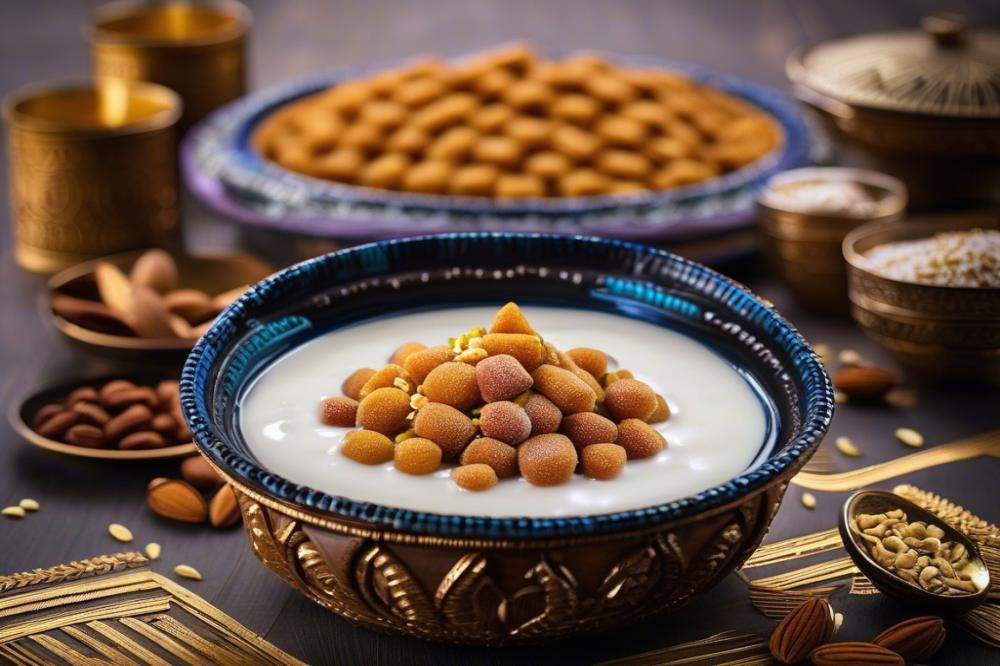Introduction
Keshk carries a special place within Egyptian cuisine. This flour-based dessert is not only a treat for the palate but also a reflection of cultural heritage. It stands out as one of the most cherished traditional recipes in Egypt, often enjoyed during festive occasions and family gatherings. The process of creating this sweet dessert involves a fascinating method of fermentation, which is integral to its unique flavor and texture.
fermented flour plays a vital role in many Middle Eastern desserts. This technique has been handed down through generations, showcasing the culinary traditions of the region. Preparing a Keshk recipe requires patience and skill, as the dessert’s success depends on how well the fermented mixture comes together. In both rural and urban areas, families often gather to partake in dessert preparation, reinforcing community bonds while celebrating their culinary roots.
Exploring the history of Keshk reveals much about Egyptian culture. Ancient Egyptians utilized various grains and fermentation processes, setting a foundation for many contemporary dishes. Over time, this dessert evolved, influenced by diverse culinary practices across the Middle East. Today, Keshk serves as a delicious reminder of how food can connect people to their history and traditions.
Understanding Keshk
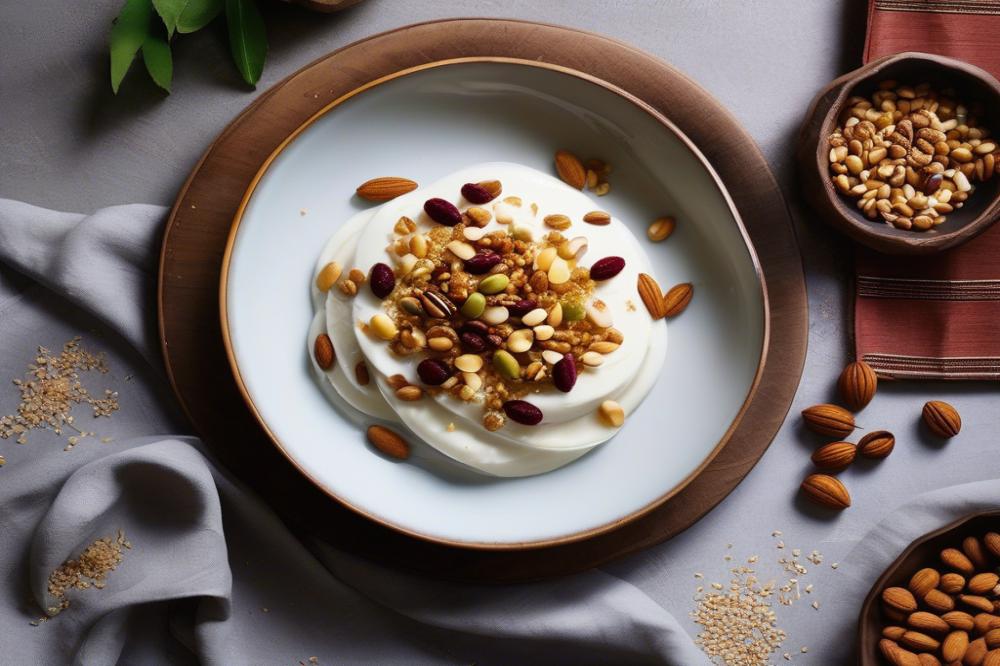
Keshk is a type of sweet dessert made from fermented flour. This dish holds a special place in Egyptian cuisine. It is more than just a treat; it reflects a rich history and tradition. Fermented flour serves as the primary ingredient, giving it a distinctive taste and texture.
The origins of Keshk can be traced back to Middle Eastern desserts. Many cultures in the region have developed their own versions, each showcasing unique flavors and preparation methods. The use of fermented ingredients often symbolizes preservation and innovation in ancient cooking practices. With its roots deeply embedded in local traditions, it is a quintessential example of how food can represent cultural identity.
In Egypt, this flour-based dessert holds great cultural importance. Families often pass down traditional recipes through generations. It can be found at special occasions, making it a cherished part of festive gatherings. Variations of this dessert exist throughout the country, varying in sweetness, texture, and presentation. Some recipes may include nuts or dried fruits, while others focus purely on the taste of the fermented flour. These adaptations highlight the diversity of culinary traditions in Egyptian culture.
Cooking methods can differ significantly as well. While some may choose to prepare their Keshk through slow fermentation, others might expedite the process using modern techniques. Each method influences the flavor. Regardless of the approach, the dessert remains a favorite among many. Dessert preparation can also be a communal activity, where families come together to create this beloved dish, making it a bonding experience.
Ingredients and Cooking Method
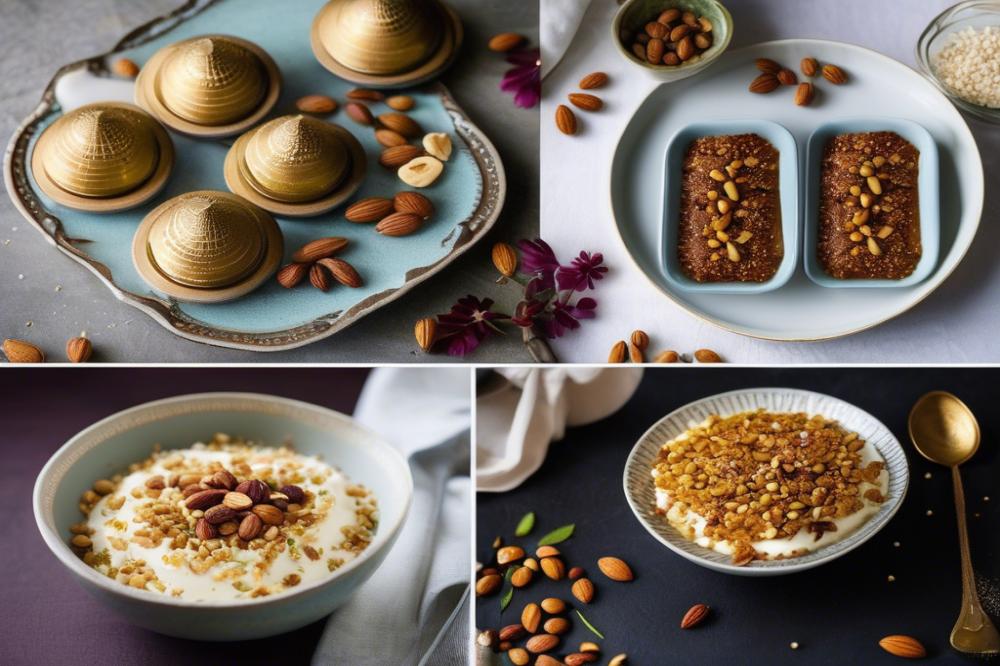
Comprehensive Ingredients List
To create this delightful sweet dessert, gather the following ingredients:
- Fermented flour (1 cup)
- Water (4 cups)
- Sugar (1 cup)
- Ghee or butter (3 tablespoons)
- Milk (2 cups)
- Nuts for garnish (optional, such as almonds or pistachios)
Nutritional Information for Each Ingredient
Understanding the nutrition in each component can be helpful:
- Fermented flour: 100 calories, 22g carbohydrates, 3g protein, 1g fat
- Water: 0 calories, 0g carbohydrates, 0g protein, 0g fat
- Sugar: 387 calories, 100g carbohydrates, 0g protein, 0g fat
- Ghee or butter: 300 calories, 0g carbohydrates, 0g protein, 34g fat
- Milk: 103 calories, 12g carbohydrates, 8g protein, 5g fat
- Nuts: approximately 170 calories, 6g carbohydrates, 6g protein, 15g fat (varies by type)
Step-by-Step Cooking Instructions
Follow these steps to prepare the dish effectively:
Preparation of Fermented Flour
Start by obtaining fermented flour. If you don’t have any, you can create it at home. Mix equal parts of flour and water, then let it sit at room temperature for about 48 hours. This allows fermentation. After the flour rises and has a sour smell, it’s ready to use.
Mixing and Cooking Process
In a large pot, combine the fermented flour with water. Stir well to dissolve any lumps. Heat the mixture over medium heat while constantly stirring. Add sugar slowly, ensuring it dissolves completely. Once the mixture thickens, introduce ghee or butter. Stir until fully integrated into the mixture. Gradually add milk while continuing to mix. Cook until a smooth, thick consistency is achieved.
Cooling and Setting the Dessert
After cooking, remove the pot from heat. Transfer the mixture into a deep dish or individual serving bowls. Allow it to cool at room temperature. Once cooled, place the dish in the refrigerator. Let it set for at least 2 hours. This step is crucial for achieving the perfect texture.
Serving Suggestions
Before serving, consider garnishing with nuts for added flavor and texture. Drizzle a bit of honey on top to enhance sweetness. This dish pairs well with hot beverages, making it a suitable choice for gatherings. Enjoy this traditional recipe from Egyptian cuisine that is sure to impress friends and family.
Exploring Culinary Variations
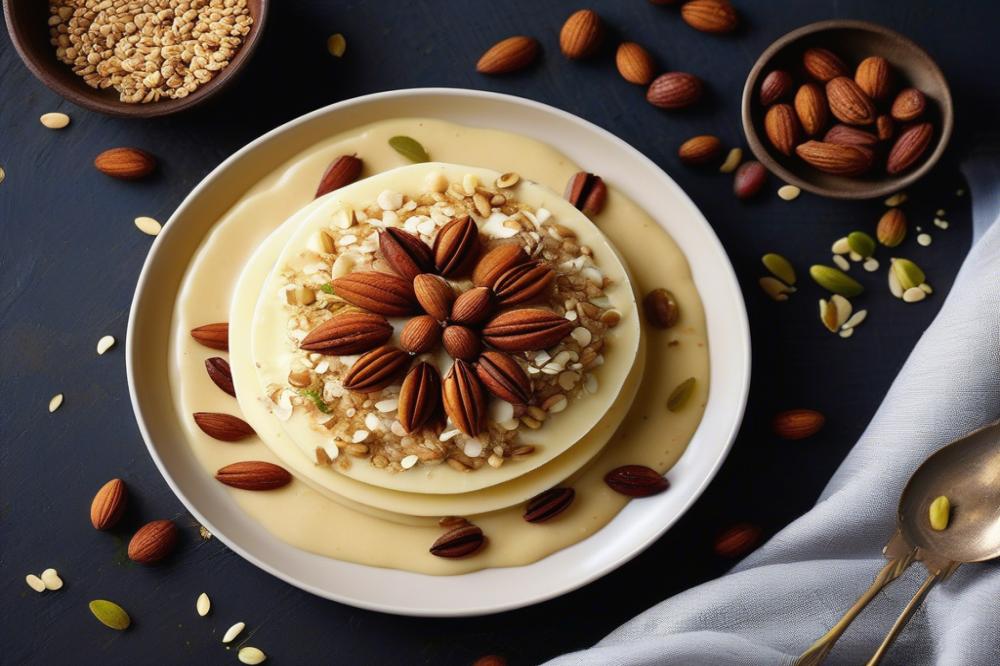
Different Regional Variations of Keshk
Many regions in Egypt have their own take on keshk. Each area adds a personal touch to the traditional recipe. For instance, in rural areas, people might make a thicker version. City dwellers often prefer a creamier texture. Some variations use different spices to enhance the flavor. Others might include nuts or fruits, giving the dessert a unique twist. This diversity reflects the rich heritage of Egyptian cuisine.
Alternative Ingredients and Modifications
Substituting ingredients is a common practice when preparing this sweet dessert. Instead of using regular flour, some cooks opt for whole wheat flour. This choice can add a nutty flavor and a slightly different texture. People may also incorporate natural sweeteners, like honey or date syrup, for added richness. Vegan recipes can replace dairy with plant-based milk. These modifications cater to various dietary preferences and can transform the dish.
Serving Styles and Accompaniments in Egyptian Cuisine
Serving keshk can vary widely. Often, this flour-based dessert is presented in small bowls, topped with nuts or a drizzle of syrup. Some enjoy it warm, while others prefer it chilled. Accompaniments play a significant role in enhancing the experience. Pairing the dessert with a cup of mint tea is common. Fresh fruits or a side of yogurt can also complement the flavors. Each serving style reflects the cultural importance of community in Egyptian dining.
Keshk in Modern Egyptian Cuisine
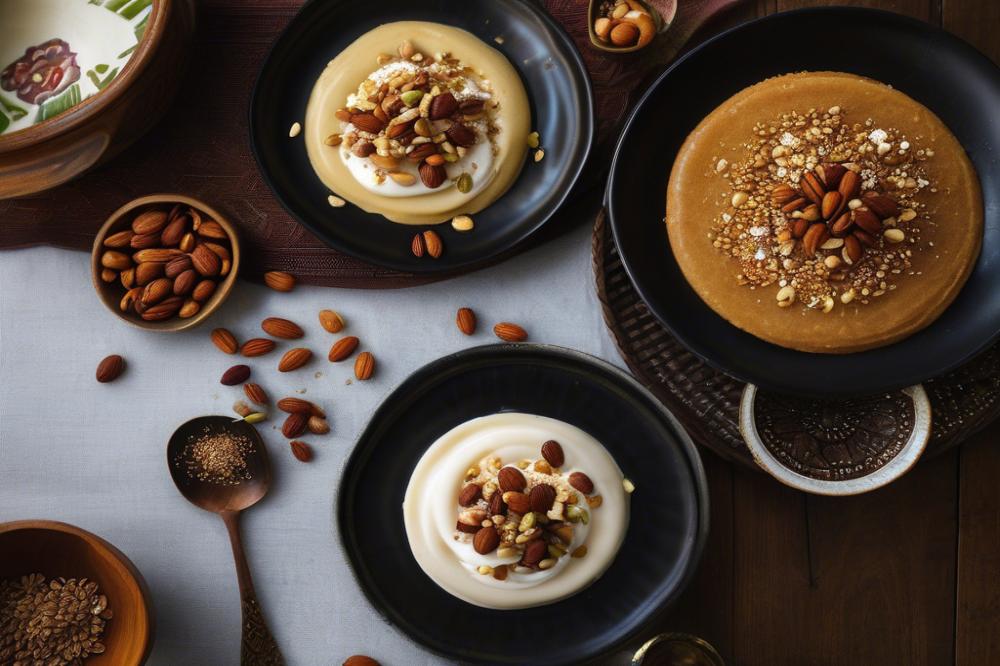
In Egypt today, cooking methods for traditional recipes have evolved. Many chefs are experimenting with how to create keshk. This sweet dessert can still be made using fermented flour, but new techniques are emerging. For example, some cooks are now incorporating different flavors and ingredients that were not part of the classic versions. The essence remains, yet the execution is fresh and innovative.
The keshk recipe serves as a fascinating bridge between past and present culinary traditions. While many families honor historical methods, others are blending these with contemporary tastes. This dessert reflects a desire to retain cultural significance while also appealing to modern palates. By mixing old practices with new ideas, cooks create a dish that honors its origins but fits within today’s food scene.
Middle Eastern desserts have always held a special place in culinary practices. In contemporary Egyptian cuisine, keshk is gaining popularity at special events and gatherings. It is often viewed as a symbol of hospitality. More people are sharing their unique keshk variations on social media, further increasing its visibility. This dessert preparation has become a way for home cooks to showcase their creativity while respecting their heritage.
The fusion of flavors found in keshk positions it well within the broader spectrum of flour-based desserts. Chefs can customize the ingredient list, making it not only a tasty option but also a versatile one. Many food enthusiasts are curious about how traditional dishes can adapt over time. This curiosity drives the conversation around keshk and other similar desserts, allowing them to thrive in modern Egypt.
Final Thoughts on Keshk and Culinary Heritage
The significance of Keshk in Egyptian culture goes far beyond its delightful taste. This traditional sweet dessert represents the rich culinary heritage of a region steeped in history. Generations have prepared and enjoyed this dish, passing down the techniques and flavors. By embracing recipes like this, we connect with our ancestry and celebrate a vibrant past.
Exploring traditional recipes is a rewarding endeavor. Trying your hand at cooking these dishes not only enriches your culinary skills, but it preserves cherished customs for future generations. Every bite of something homemade carries the love and tradition it was made with. Encourage friends and family to join you on this culinary adventure. Share in the joy of discovery and creativity.
Preparing Keshk, or any beloved dish, can bring warmth and happiness to your kitchen. The act of cooking connects you to different cultures and their histories. This sweet dessert reminds us of the joy that comes from shared meals and stories around the table. Try it, celebrate its flavors, and relish the experience. Enjoying Keshk with loved ones exemplifies the beauty of food traditions that make us feel united, no matter where we are.

